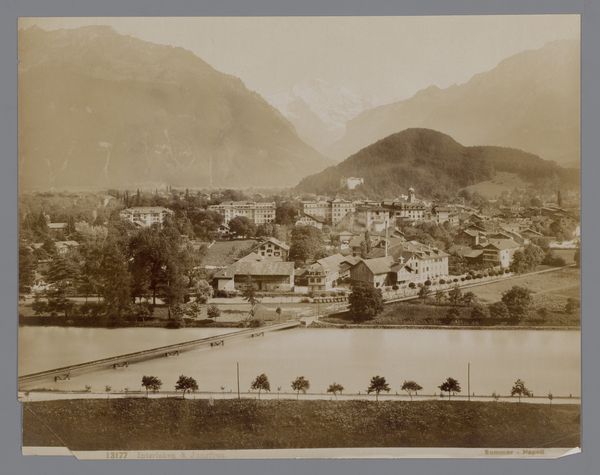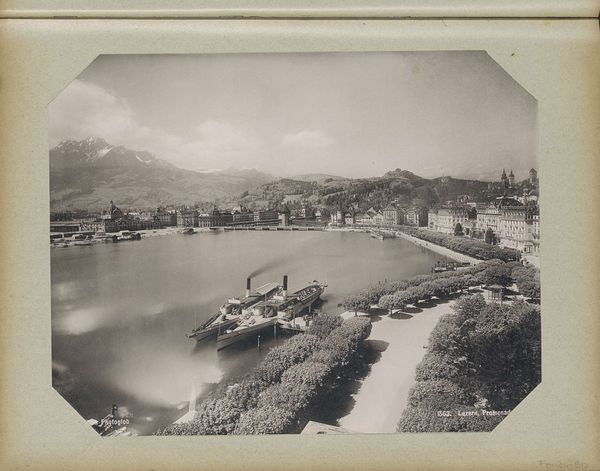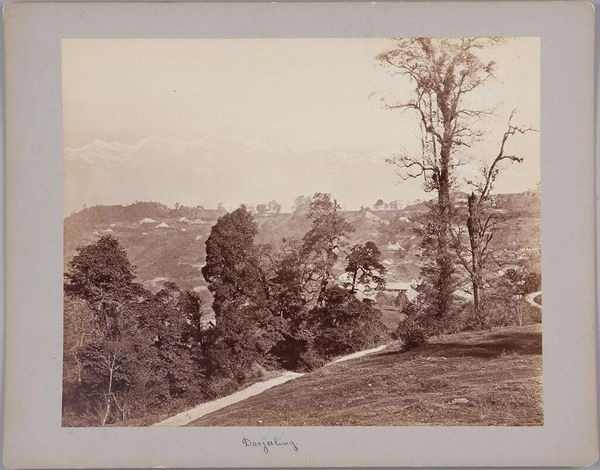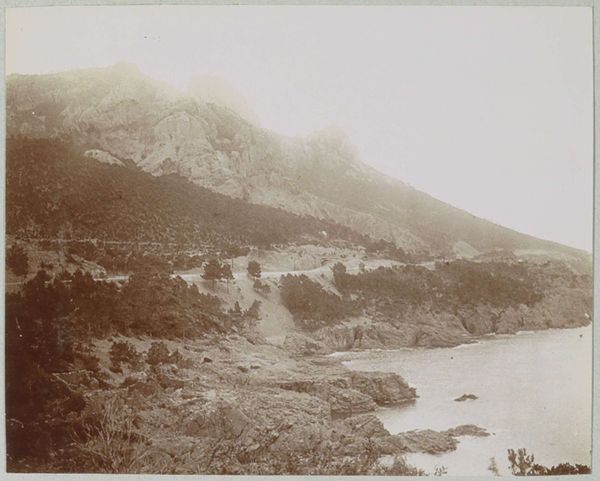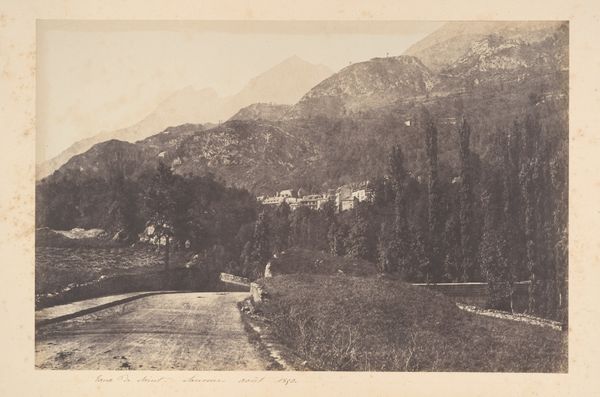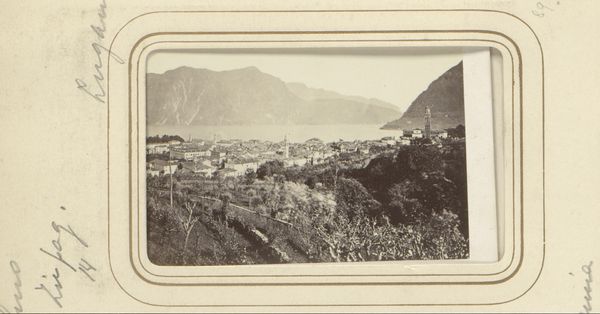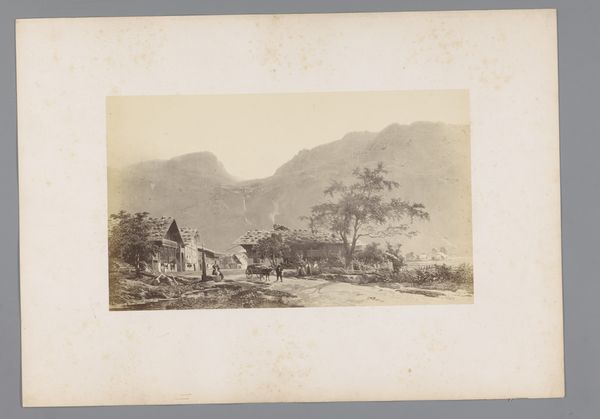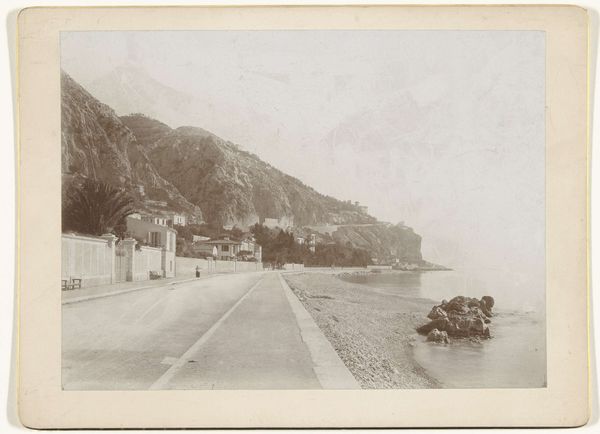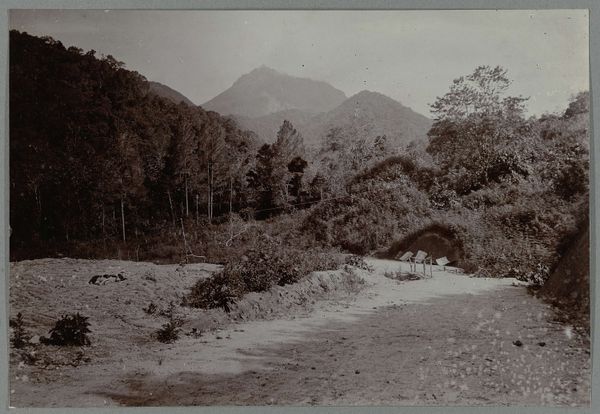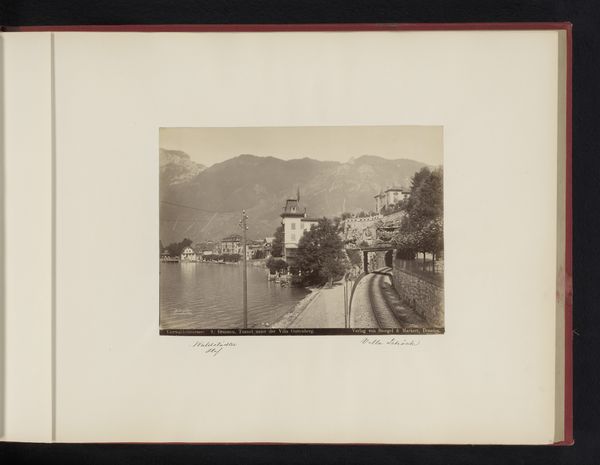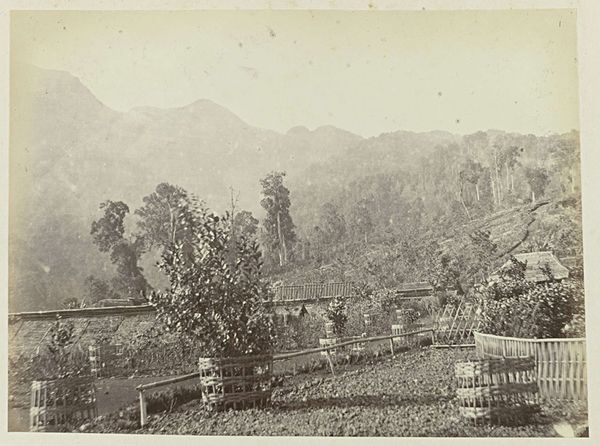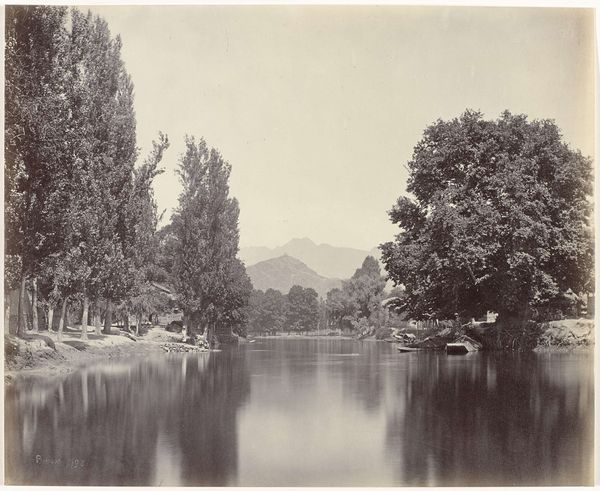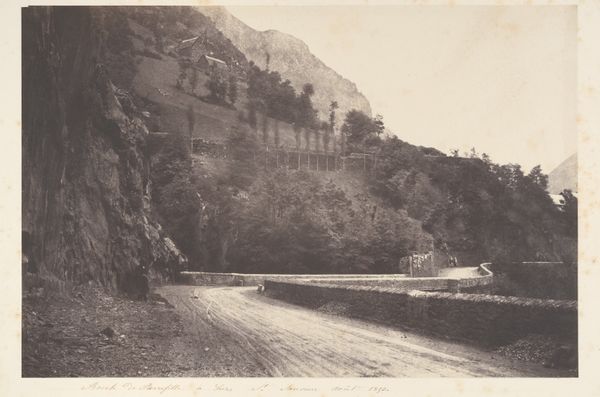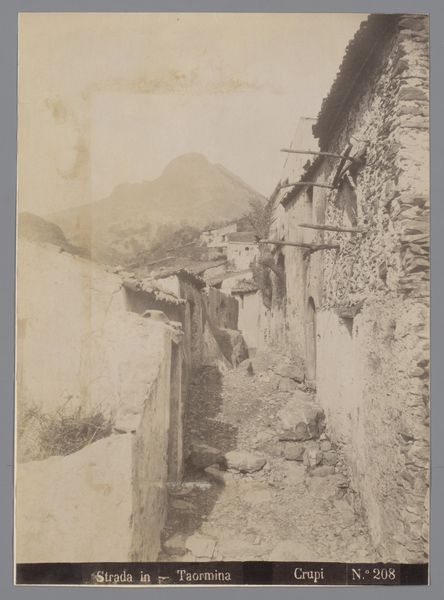
Droogstaande rivier in het Borrigo dal bij Menton c. 1886 - 1896
0:00
0:00
photography
#
landscape
#
photography
#
realism
Dimensions: height 287 mm, width 374 mm, height 322 mm, width 498 mm
Copyright: Rijks Museum: Open Domain
Editor: Here we have "Droogstaande rivier in het Borrigo dal bij Menton" – or "Dried-up river in the Borrigo valley near Menton"—a photograph from around 1886 to 1896. It was taken by Henry Pauw van Wieldrecht and it's held at the Rijksmuseum. It looks very still, a dry riverbed receding into a hazy distance. What strikes you about this piece? Curator: Looking at the sepia tones and the photographic process of the late 19th century, I am most interested in the labour involved in capturing this image. It wasn’t point and shoot, it was an entire, cumbersome process. It speaks volumes about how landscape photography during this time aimed to both document and to create a vision of nature shaped by human intervention and by this difficult photographic labour. Do you think this image idealized the relationship between nature and the developing resort town, or exposed a manipulation of the natural landscape? Editor: I think a bit of both, maybe? The formal gardens contrast sharply with the dry riverbed, highlighting the attempt to control and tame the natural environment, while the dust suggests an indifference to nature and the looming mountains suggests the untameable force. What would a contemporary photograph, taken in the same location today, reveal about labor practices and landscape? Curator: Precisely! That comparison could show shifts in labor connected with tourism, land usage, water control, or, the ease of contemporary image making. What resources were extracted and manipulated to transform this valley for leisure and the town itself? Considering the relationship between photographic labor and societal ambitions helps us unpack layers of meaning in this seemingly straightforward landscape. Editor: I see how shifting our focus from just aesthetics to production changes the conversation. Now, I wonder, how do water management systems shape the present landscape of Menton? Curator: Indeed! Thinking critically about the conditions of its making reframes our understanding, doesn't it?
Comments
No comments
Be the first to comment and join the conversation on the ultimate creative platform.
